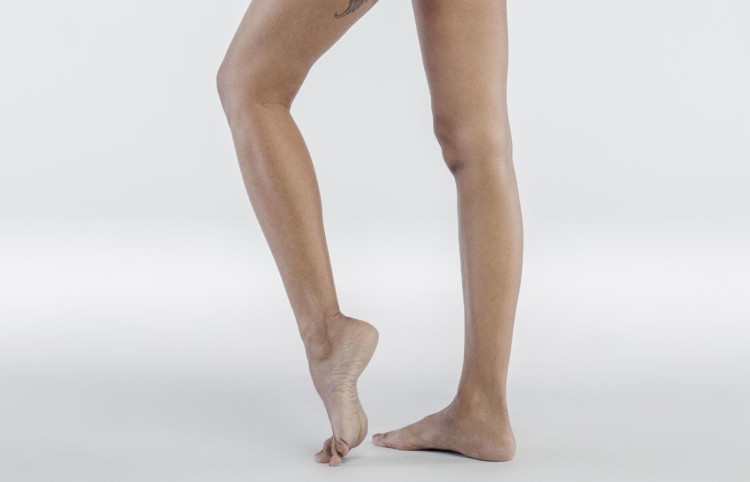Varithena: What You Need to Know
Pros & cons
How much it costs
What to expect
How long healing takes
How soon you see results
Risks to consider
Fast facts
Varithena is the only FDA-approved injectable foam used to treat spider veins, varicose veins, and venous reflux disease. It's the brand name of polidocanol, a sclerosing agent that's injected into malfunctioning veins, including great saphenous veins (GSV) and accessory saphenous veins above and below the knee, to gently close them and redistribute blood to healthier, stronger veins.
Venus reflux disease occurs when veins don't properly allow blood flow back to your heart, sometimes causing blood to flow in reverse and pool in the legs.
Treating this disorder improves symptoms like heaviness, achiness, swelling, throbbing leg pain, and itchiness.
A canister of Varithena contains a mixture of oxygen and carbon dioxide, which are easily soluble in blood. It's released as a microfoam with small, dense, uniform bubbles, which its manufacturer claims withstand breaking down for longer than other sclerotherapy treatments.
This staying power gives it a high success rate in collapsing the vein walls of the diseased vein and redirecting blood flow to healthy blood vessels.
Pros
- It’s effective at treating both spider veins and varicose veins.
- Many patients need only one treatment to treat large varicose veins in the leg's GSV system.
- Blood flow to and from your legs to your heart should be markedly improved.
- Soreness, throbbing, and heaviness associated with enlarged veins (and poor circulation) will diminish.
- Unlike laser ablation, another common treatment of incompetent great saphenous veins, there's no risk of damaging nerves or tissue.
- The treatment significantly improves the appearance of varicose veins, so legs look smoother and more evenly toned.
Cons
- Blood clots and ulcers may form, so talk to a vein specialist to make sure it's the right vein treatment for you.
- Some patients do need an additional Varithena procedure for the same vein, if it’s quite enlarged and doesn't fully collapse after one session.
- It also comes with some risk of allergic reaction, including rash, headaches, and swelling of the hands, face, or mouth.
The price you pay will depend on your doctor’s level of experience, their office location, and how many sessions are needed. You may also need maintenance sessions, once veins reappear.
During this outpatient treatment, your vein specialist will make a direct injection into the varicose vein or spider vein with a small needle or through a catheter, usually using ultrasound guidance.
The nurse or technician may apply pressure to the vein as the sclerosant is being distributed. How many injections you receive depends on how many malfunctioning veins you have that need to be treated. The procedure should take less than an hour, and after the needle or catheter is removed, you will need to wear compression stockings or bandage for several days or even weeks, to prevent blood clots.
You will be able to go home the same day, and your doctor may suggest you walk around for 15–20 minutes the day of the treatment and for several days or weeks after. Post-treatment, you won’t be able to engage in any heavy exercise for at least a week, but you will also want to avoid sitting for prolonged periods of time. Don’t sunbathe or take a hot bath for two to three days.
Varithena is not a cure for vein diseases, so its effects are not permanent. Depending on the severity of the veins being treated, you may need additional treatment sessions, spaced at least a week apart. You should expect to follow up regularly with your healthcare provider so they can track your progress and response to the treatment.
A clinical trial found visible results appeared after four weeks, with a peak at eight weeks—so expect to wait a month or two before assessing its efficacy.
You may feel a burning or stinging sensation during the procedure, but most people don't find it too painful. In fact, local anesthesia is rarely needed or used. One RealSelf member reports, “This treatment was a breeze—fairly painless and not invasive.”
You may also have some mild discomfort during the first few days of recovery. If the soreness or pain becomes.
The dangers of Varithena are few, and the treatment is considered generally safe. In the clinical study, a few patients had incidents of deep vein thrombosis in other veins in the treated leg. However, they were asymptomatic, and all the cases were resolved without incident by the end of the study. No severe allergic reactions were recorded.
Common side effects include pain or discomfort in the treated leg, as well as skin irritation (or possible hematoma) at the injection site. Contact your doctor if you notice indented, discolored, or peeling skin.
In the U.S., a Varithena procedure can be covered under most insurance polices. However, varicose vein treatments like this one are only covered if they're considered medically necessary, rather than just a cosmetic procedure.
Any provider who offers Varithena will be able to advise you on whether your procedure is likely to be covered, and their staff should be familiar with working with an insurance carrier to ensure coverage, if your procedure qualifies.
Updated June 13, 2023

